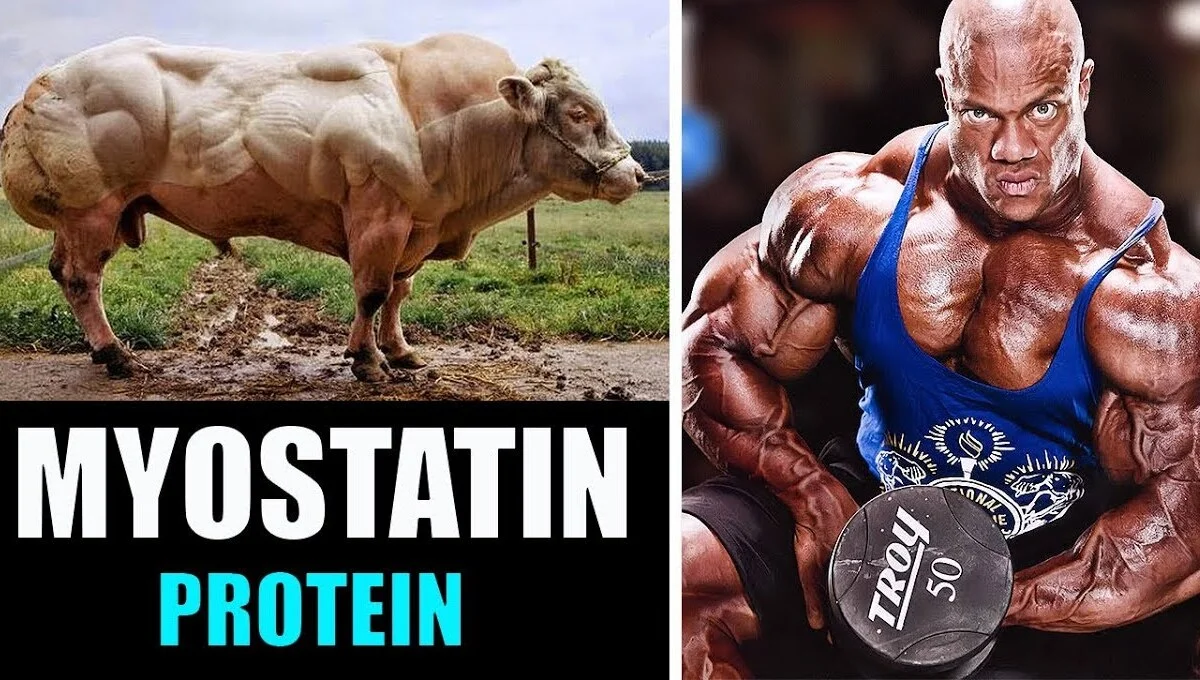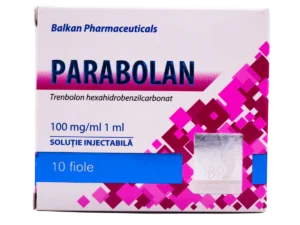Myostatin (also known as growth differentiation factor 8 or GDF-8) is an internally synthesized peptide that inhibits growth and differentiation of muscle tissue. Myostatin is formed in muscle and then released into the bloodstream, exerting its effect on muscle by binding to ACVR2B (activin type II receptor). In humans, myostatin is encoded in the MSTN gene.
Animal studies show that blocking the action of myostatin leads to a significant increase in lean muscle mass with virtually no fat layer.




Myostatin Blockers
A number of myostatin blockers are currently under development, but there are currently no drugs approved for human use.
Myostatin Blocker MYO-029 (Stamulumab)
Wyeth Pharmaceuticals began developing MYO-029 (Stamulumab) in 2002, a recombinant antibody that binds to myostatin and blocks its effects.
In early 2005, Wyeth Pharmaceuticals, with additional MDA funding, began a Phase 1-2 safety and tolerability clinical trial of MYO-029 (Stamulumab) in 116 subjects. Clinical trial data were not published until January 2008.
The drug was shown to be safe and well tolerated in three different dosages, as reported by Kathryn Wagner and colleagues from the Johns Hopkins University School of Medicine in Baltimore in the Annals of Neurology.
However, in March 2008, the company announced the suspension of development of MYO-029 (Stamulumab) after clinical trials ended because none of those participating in the study had statistically significant improvements in strength or muscle growth.
ACVR2B receptor elements as myostatin blockers
“Mighty mice” – animals with an artificial myostatin gene mutation
A new drug, ACVR2B, which is a solution of myostatin receptor elements, has great potential. ACVR2B molecular elements have a site similar to the receptor’s active center and bind to free myostatin, blocking its ability to activate receptors. This drug was created in 2005, under the direction of the same Dr. Se-Jin Lee, Johns Hopkins University School of Medicine in Baltimore. Se-Jin Lee hopes that ACVR2B can be used in humans in the near future, whereas as of 2005, it had already proven highly effective in laboratory mice. Dr. Se-Jin Lee’s team tested different doses of ACVR2B on 49 mice and recorded muscle gains after four weeks of using the drug. Maximum muscle gains were achieved with two injections per week, at a dosage of 50 mcg per kilogram of body weight. The muscle mass of these mice increased by 61% over baseline.
ACE-031
ACE-031 is another promising drug of the class of myostatin blockers, it is a solution of extracellular parts of ActRIIB receptors coupled with Fc fragment of immunoglobulin G. By blocking the signal through the ActRIIB receptor, the drug increases muscle mass and strength. Preliminary tests of ACE-031 demonstrated high efficacy in experimental models with animals.
Clinical trials of ACE-031 for the treatment of myodystrophy were discontinued in May 2013 due to the development of side effects (dilatation of skin vessels, nose and gum bleeding). Artisanal preparations from a Chinese manufacturer are available for sale.
Modified myostatin propeptides
As another myostatin blocker, modified myostatin propeptides, in particular the mutated myostatin propeptide D76A, have been proposed. The mechanism of action of the drugs is quite interesting. As long as immature myostatin (myostatin precursor) is not modified by metalloproteinase, it will not have its effect. Using mutated myostatin propeptides, such as D76A, irreversible or partially irreversible binding to metalloproteinase occurs, after which the posttranslational processing of promiostatin stops, and simply put, no mature myostatin is formed.
Trials were conducted only on animals, and there is no data on the use of this group of drugs in humans yet.
Conclusions for athletes
Currently, there is no way to fully use drugs or supplements acting as myostatin antagonists because:
- Insufficient evidence base. Many studies give diametrically opposite conclusions, so there is still very little reliable data in this area.
- Side effects. It is too early to judge the safety of myostatin deactivation. It is possible that it can lead to delayed complications of various kinds, for example, myocardial hypertrophy. Also, recent work has shown that intense muscle growth leads to an increase in the frequency of ligamentous apparatus injuries, which remains at the same level of development and is designed for relatively smaller loads.
- low selectivity. As already noted, myostatin is part of a very extensive metabolic system where many elements are similar in structure and duplicate the function of others. By using drugs that inhibit the action of myostatin, it is possible to get disruption of other elements of the metabolic system. In other words, given the rather wide range of competence of this metabolic system, in addition to muscle growth, there is a possibility of numerous serious side effects on all organ and tissue systems.
Myostatin blockers in sports nutrition
While the scientific world is engaged in heated debates and active testing, the sports industry is actively producing completely safe and “effective” myostatin blockers.
Myo-Blast, according to the manufacturer, contains the highest dose of the most potent myostatin-neutralizing agent known as – Myozap CSP3.
Excerpt from the description:
Myozap CSP3 is the trade name of a proprietary myostatin protein neutralizing compound. This extract is derived from an exotic sea plant (Cystoseira canariensis) and was first discovered during scientific research by biochemistry researchers at Las Palmas University in Spain. Once you start neutralizing myostatin, new muscle cell growth begins. With this sports nutrition, new muscle cells increase in size and form new muscle tissue fibers. Each new fiber, in fact, represents the potential for additional new muscle, over and above the ones you already have. And these many new muscle fibers eventually form in your body, giving you the ability to break the genetic threshold set by myostatin.
Myostat, Myo-T12, etc. have a similar description and the same active ingredient, Cystoseira canariensis.
Despite these big words, these supplements are totally ineffective. Currently, there is not a single supplement that affects myostatin metabolism.
- Research by Jorjei Niffis, a professor at the National Institutes of Health (Ohio, USA), has revealed that all the qualities attributed to Cystoseira canariensis-based sports nutrition are nothing more than marketing gimmicks. They found that even in amounts 50 times greater than those recommended, these supplements had no significant effect on muscle mass growth.
- All modern myostatin antagonists are of a protein nature, so they are not taken orally, because then the active substance would inevitably be destroyed by digestive enzymes.
Effective myostatin blockers
Creatine
A study conducted by Iranian scientists was published in 2009. They found that myostatin was largely inhibited when creatine was supplemented.
Protein
Hulmi JJ and Tannerstedt J proved that protein blocks myostatin synthesis when taken systematically by exercisers.
Nicotine is a myostatin activator
A study conducted by scientists at the University of Nottingham found that muscle protein synthesis activity was significantly lower in smokers than in nonsmokers. In addition, the levels of myostatin protein and MAFbx enzyme are much higher in nicotine drinkers. The former simply inhibits muscle growth, while the latter breaks down muscle proteins.







